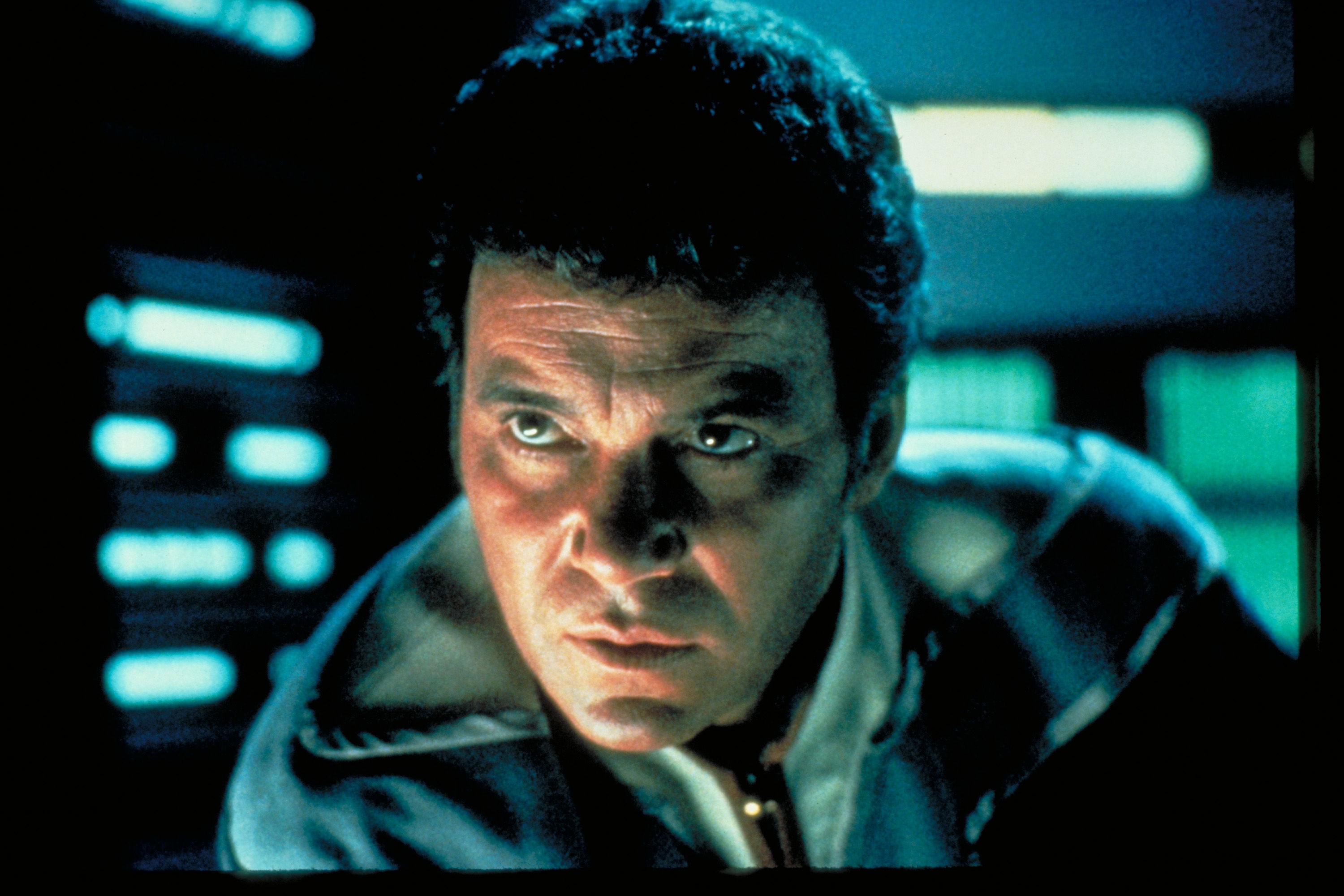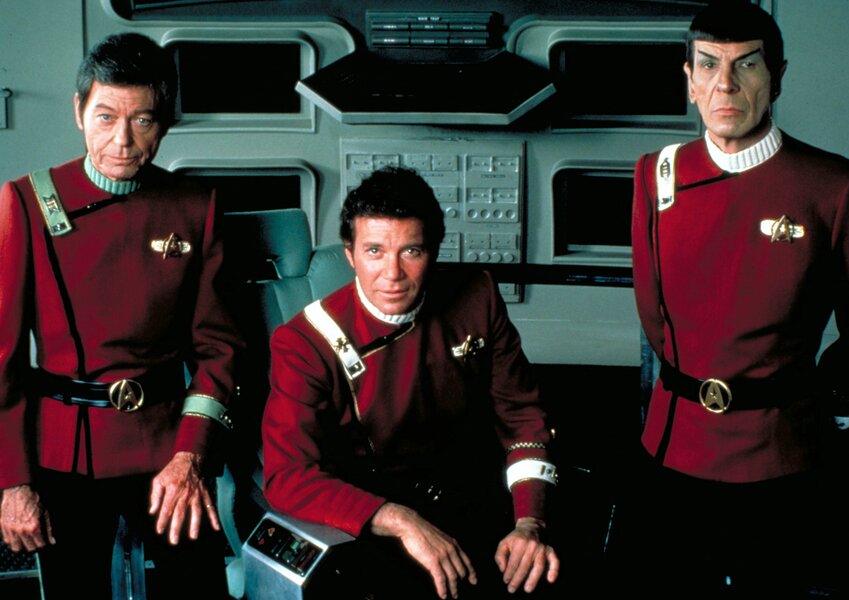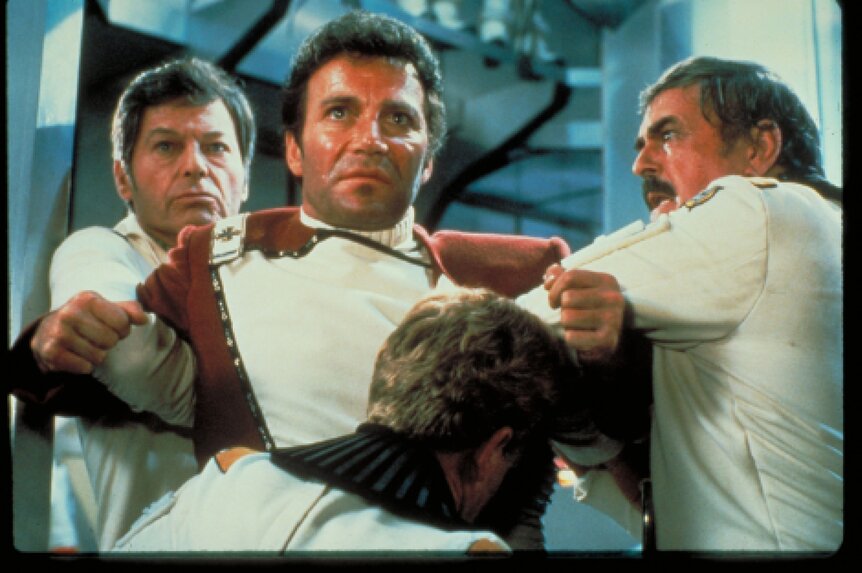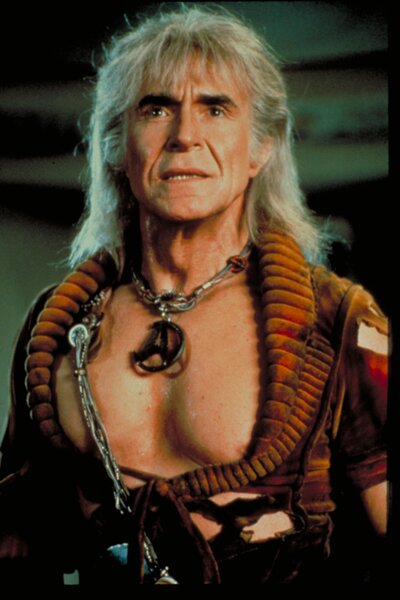Create a free profile to get unlimited access to exclusive videos, sweepstakes, and more!
Star Trek's Wrath of Khan succeeded even if Gene Roddenberry balked at its most famous scene

When you think of 1982’s Star Trek II: The Wrath of Khan, you probably think of two things, perhaps simultaneously: Captain Kirk yelling “KKKKKHHHHHAAAANNNNNNNNNNN!” and Ceti eels burrowing their way into Commander Chekov and Captain Clark Terrell’s ears. History being what it is, you can’t have one without the other and still have a classic, but Star Trek creator Gene Roddenberry — who was famously forced out of WoK’s production after the lackluster response to 1979’s Star Trek: The Motion Picture — thought that Kirk’s killing of the Ceti eel that emerged from Chekov’s ear wasn’t something a proper Starfleet admiral would do. Granted, this comes from the guy who also supposedly tried to spoil Spock’s death, so perhaps he had ulterior motives.
To discuss such sabotage, and everything else Khan-related — like why the film is likely William Shatner’s most focused Kirk performance, how it became the first movie to take you to the CG stars, and how Ricardo Montalban’s pecs "are real, and they’re fabulous" — we caught up with the experts at the Inglorious Treksperts podcast, Mark A. Altman and Daren Dochterman, who are hosting an interactive virtual screening of Paramount’s Star Trek II: The Wrath of Khan on Saturday, April 25.
Altman, who's also a prolific producer and TV writer, literally wrote the book on Trek: The 50 Year Mission: The Complete Uncensored, Oral History of Star Trek; and Dochterman, a 30-plus-year entertainment industry vet, worked as visual effects supervisor on the Director’s Edition of Star Trek: The Motion Picture and as a concept artist on Star Trek: Picard. So their insight is particularly... fascinating.
Lucky for you, the duo boldly goes deep into Star Trek II with SYFY WIRE in the Q&A below...
Why does Wrath of Khan hold up so well?
Daren Dochterman: It is a mythic story of good and evil. It takes the characters in a place that we hadn’t really dealt with before, with Kirk turning 50 years old and feeling worn out and out of date. And he’s trying to figure out his place in the galaxy again. This is a very life-changing event for him, both in his dealing with Khan, and dealing with what happens on the mission. And it’s a very well-told tale.
How did William Shatner feel about playing middle-aged?
Mark Altman: At the time, he had concerns about portraying a character that was aging, but a lot of that came out of the response to the criticism of Star Trek: The Motion Picture, where some of the critics felt like the characters hadn’t acknowledged the fact they were growing older — although some of us would argue they did, that the characters did evolve in that movie — so it was really brilliant of [director] Nicholas Meyer to embrace the idea that these actors were older, and they weren’t at the same place they were 10 years earlier in the TV series.
Which is why, even now, that first scene resonates so well, in Kirk’s apartment, where Bones is calling him out on growing older, and not being happy with a desk job, and of course once again taking command of the Enterprise.
…and having a little Romulan Ale!
Altman: And having a little Romulan Ale. And getting those glasses because he’s allergic to Retinax.
How did Nicholas Meyer have such fantastic insight into what Star Trek needed if he was coming from outside of Star Trek?
Altman: [Paramount was] desperate; they were out of development money; they had a bunch of scripts that were going nowhere fast. There were various iterations where Khan had magical powers. There was another version that Sam Peeples wrote that took Khan out and there were these two Wonder Twins type villains, which was ludicrous. Basically, to save the movie they needed someone who was a writer and a director. And Nick rewrote this incredible script in a little over a week... 10 days. And what he did, was he basically tapped into things that he loves — stuff like Moby Dick and Horatio Hornblower — and was able to use the touchstones of Star Trek in a way that felt very fresh at the time, and still does.
He really embraced it, and taught himself... you know everybody who got involved with Star Trek at the time fell in love with Star Trek... [executive producer] Harve Bennett was smart enough to watch every episode of the original series before he started the gig, and then Nic Meyer really familiarized himself with what Star Trek was, and what the underpinnings of Star Trek were, which is why that film was so effective and continues to endure over 30 years later.
Why did Harve decide on Ricardo Montalban’s TOS episode “Space Seed” as the jumping-off point?
Altman: Well, I think there was a lot of criticism over The Motion Picture not having a real villain, you know V’ger is very heady, cerebral context, and to a lot of people it was very similar to NOMAD in “The Changeling.”
So they needed a real black hat, a baddie. And in watching all those episodes, he really gravitated towards the star power of Ricardo Montalban and that role, and it seemed like such an obvious choice for a villain for that piece, and he was obviously right.
And that’s without any guarantee that Ricardo Montalban was even going to do the movie at that point. He was off doing Fantasy Island. The idea of him coming to play a villain when most people knew him as a good-natured guy in a white suit who hung out with Hervé Villechaize on an island granting people’s fantasies, to then say, "We’re going to make this guy the most villainous vengeance filled guy in the universe," at the time was fairly unique, and a sort of a gutsy move by everyone involved.
I heard Ricardo didn’t exactly fall back into the role as smoothly as Corinthian Leather.
Altman: Well, that’s true, that he was sort of playing it like Mr. Roarke in space, and giving a very broad performance. And it was Nic Meyer who basically pulled him aside and gave him some adjustments. And Ricardo very famously said, “Ah, you’re going to direct me! I need direction, I don’t know what I’m doing.” And obviously, between Ricardo and Nic, they did something pretty amazing.
One of the thing’s Bob Sallin, the producer, told us on the podcast was that some of the lead actors who had sort of been phoning it in, after they saw what Ricardo was doing on the movie, [they] suddenly started taking the movie a lot more seriously and really had to up their game.
Is it true that the film boasts the first full CG scene in film?
Altman: No, that was actually in Young Sherlock Holmes.
Dochterman: No, no, no... Young Sherlock Holmes was the first CG character... yes, that [Wrath of Khan scene] was done by ILM’s then-unnamed computer division, that figured out the whole Genesis presentation reel, and that was the first extended scene that was all created in CG.
And, of course, the star fields in Star Trek II were also created as CG. Not a lot of people realize that.
Altman: It’s really cool looking in the opening credits, you see the way that it moves through the stars, it’s all computer-generated and very unique at the time.
And those stars, are they accurate?
Dochterman: I think at one point they put the actual stars of our part of the galaxy into an Evans & Sutherland computer, and supposedly they are accurate. Now, accurate from where is the question, because you’re traveling through them so fast.
Because if they’re accurate from Earth, they aren’t going to be for long as you’re warping through them.
Yes, warp confuses things. What about Ricardo Montalban’s pecs? Are those accurate, or are those computer-generated?
Dochterman: They’re real and they’re fabulous!
Altman: That’s probably the question [Nicholas Meyer] is asked more often than anything.
How did they come up with the Ceti eel?
Altman: I think that was in one of the earlier scripts. The Ceti eel was always in there, and something left when Nic Meyer was playing Mad Libs and connecting all the earlier drafts for what he ultimately wrote.
It was something that Gene Roddenberry really hated, when Kirk phasers and destroys the Ceti eel after crawling out of Chekov’s ear, because... well, Daren what would he say?
Dochterman: [As Roddenberry] “We don’t’ destroy life. The Star Trek characters would not go out of their way to destroy a life form, no matter what it would do.”
Altman: But he started drinking his own publicity at that point, and believed all this stuff. After he’d been replaced by Harve Bennett, he had a lot of quibbles and problems with Star Trek II, the most famous of course being that Spock would die, and [he] was the one who leaked that fact to the newspapers and to the fans to try and prevent that from happening.
I read that Leonard Nimoy only took the part if Spock would die.
Altman: Well, that was what he wanted. He wanted to die, he wanted to be done with Star Trek. He had a lot of aspirations beyond Star Trek. After Star Trek 1, he felt that this was a dead franchise, and his deal was, “Yeah, I’ll do the movie, but only if you kill me off.”
They got cold feet and realized they couldn’t do Star Trek without him, and he used that to leverage a directing gig on Star Trek III.
What’s one thing that’s often overlooked about Wrath of Khan?
Dochterman: A lot of people have this one idea of Wrath of Khan, that it’s Kirk shouting “Khan!” at the top of his lungs. However, that’s only a moment in this amazing performance by Shatner. Shatner is arguably the most restrained and serious and focused in all of the films. He has a really interesting journey from the beginning where he’s a little bit listless and not knowing where he fits, to the end where he feels young again. It’s an excellent character-driven part on Shatner’s part.
Altman: It really was Star Trek II that in a way, you could argue, saved the Star Trek franchise. As much as we love Star Trek: The Motion Picture, it was not a success in the perception of the studio, so Star Trek II came along and really engaged an audience and critics, and made Star Trek a viable franchise again. It was not only a critical success and a terrific movie, it really was the movie that saved Star Trek.
With the purchase of a $1.99 “ticket,” fans from across the galaxy can celebrate the franchise's incredible endurance, and join the communal fun while watching Star Trek II: The Wrath of Khan, this Saturday, April 25, as boldly hosted by the Inglorious Trekspert’s Mark A. Altman and Daren Dochterman.





























